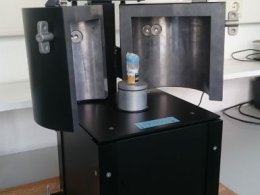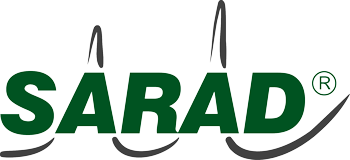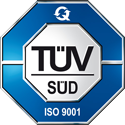Analysis of material, soil or food samples
Soil, material or food samples will be evaluated concerning their radioactive contamination by means of the emitted gamma spectre. By using High Purity Germanium (HPGe) the analysis will deliver the exact nuclide vector but requires expensive measuring equipment and can be performed only by educated specialists, usually in the labs.
Nevertheless in most the cases, large quantities of samples will have to be investigated in a short time and on site. The reference nuclides are usually known by the contamination process per se or by pre-analyses so that a complex spectrum will be the absolute exception. Clearly less expensive scintillation detectors will deliver the same results. They can be operated under field conditions, and the analysis will be restricted to a few significant emission lines that can be evaluated automatically. Performing the measurement does not require the experts’ knowledge.
For field operations, the detectors should be equipped with temperature-compensation in order to avoid recalibration during their use. In most cases there will be an increased background radiation in the areas under investigation so that a lead shielding will be purposeful to lower the detection limits.
The SARAD Lab Scout enables a quick measurement just by pressing a button that can also be carried out by unskilled personnel. A traffic light signal will indicate the observance of the nuclide-specific limit values.
The sample space that is surrounded by a lead shielding, that easily can be opened, is perfectly suited for Marinelli cups. A weighing scales incorporated in the sample holder is simultaneously used to determine the density of the probe. The large-volume NaI (TI) detector enables to minimize the time required for clearance measurement.
After removing the lead shielding, the instrument is lightweight and portable. The optional internal battery allows the autonomous operation of the Lab Scout. The foot-plate has mounting holes to tightly mount the instrument in vehicles.
A label printer is available as an accessory. It can be used to directly glue a protocol containing the analysis results as well as the spectrum directly onto the sample.



